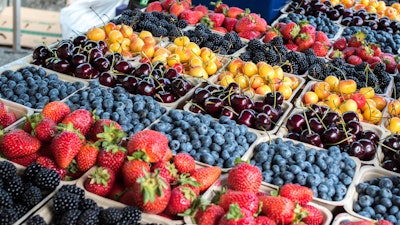
In recent years, the conversation around farming has evolved as more people seek sustainably grown, locally sourced food. Traditionally, farm stands and farmers' markets have been the primary avenues for local farmers to sell their produce, providing communities with fresh, seasonal products year-round. In 2020, about 78% of farms selling directly to customers did so within a 100-mile radius. Now, the demand for these fresh foods is creating new opportunities.
The Rise of Sustainable Eating
 GrazeCart
GrazeCart
Where Does D2C Farming Fit In?
As consumers increasingly demand farm fresh, sustainable food choices, direct-to-consumer (D2C) farming is growing in popularity. D2C farming provides a direct connection between producers and consumers, fostering trust and accountability by eliminating intermediaries. This direct connection enables farmers to have a pulse on consumer preferences, while also allowing consumers access to fresh, quality products.
The success of D2C farming can be shown through the increasing growth of farmers’ markets nationwide. According to a USDA survey, markets selling organic products report higher customer turnout, more vendors, and increased monthly sales. This trend reflects a rising interest among consumers in not only what they eat, but how what they eat is produced.
Technology Is Transforming D2C Farming
Farmers have a unique opportunity to expand their reach beyond their local markets through technology. According to the USDA NASS 2020 Local Food Marketing Practices Survey, 77% of farms with direct sales sold directly to consumers, with 59% of these sales occurring at on-farm stores and farmers' markets, and only about 10% coming from online markets.
Technology enables farmers to broaden their market opportunities and engage directly with consumers. Four key ways farmers can benefit from technology include:
Establishing a Strong Presence Online
Creating a website that is easy to use, features high-quality visuals, and descriptive product information plays a pivotal role in attracting consumers who may be interested in ordering food online. Moreover, establishing a strong social media presence is crucial. If your farm maintains a strong online presence by engaging with customers and sharing informative content, new prospects may be enticed to purchase from you based on brand recognition alone.
Efficient Inventory Management
A robust technology system that tracks inventory is essential. It enables farmers to monitor stock levels, set prices accordingly, and adjust offerings based on purchase history. For instance, if local consumers are looking for chicken, but regional buyers are more interested in beef, farmers can determine what is best for their business and revenue opportunities.
Engaging Promotions, Discounts, and Loyalty Programs
Farmers can facilitate targeted promotions and discounts through online loyalty programs, helping them to attract and retain customers. With a technology system that encapsulates both inventory management and a loyalty program, farmers can have insight as to how they move their inventory while also offering personalized deals based on shopping behavior and preferences.
Streamlined Logistics and Subscriptions
A technology system aligned with online orders can streamline and standardize shipping, delivery, and pickup logistics. Whether offering local delivery or nationwide shipping, farmers can efficiently manage day-to-day activities to ensure products reach their final destination promptly. Moreover, customizable food subscriptions that allow consumers to pick the items they desire, as well as when they receive them, are imperative for ongoing customer experience success.
 Inventory & Fulfillment screen on GrazeCart's website.GrazeCart
Inventory & Fulfillment screen on GrazeCart's website.GrazeCart
As consumer demand for sustainably grown, locally sourced food continues to grow, farmers have an opportunity to increase revenues by leveraging technology to meet the needs of a broader, more diverse customer base. With technology, farm to fork dining is available to dinner tables – in rural, urban, and suburban areas – across the US.
Brent Moore is the chief executive officer at GrazeCart.






















